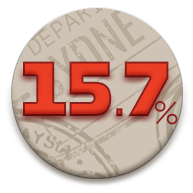 People migration illustration. | © shutterstock.com
People migration illustration. | © shutterstock.com
185 million. Most statistical offices define migrants as people who are “foreign-born,” but there is a better way. “Foreign-born” implies that once a migrant, always a migrant — regardless of integration, assimilation, or even naturalization. In some contexts, such a definition has become racialized, whether intentionally or not. This makes a big difference in political environments where “migrant” is synonymous with “outsider.” A better definition is based on citizenship (or lack thereof) in the country of residence. The main difference between a migrant and a “non-migrant” is not about their personal history, but about the rights they enjoy — in other words, the opportunities they can seize and the challenges they face. There are about 185 million people worldwide who live in a country where they do not have citizenship.
43%. Migration is often seen as exclusively the flow of people from the Global South to the Global North, but this is a myth. 43% — almost half — of all migrants and refugees live in low- and middle-income countries. That’s about 80% of refugees and 35% of economic migrants. International movements, their drivers, and their patterns, often defy simple characterizations. This has consequences for policymaking.
15.7%. We are in the midst of a profound demographic shift which will shape the migration of the future. In high-income countries the population is rapidly aging. Middle-income countries are quickly transitioning to a similar path. Meanwhile, low-income countries have large populations of young clamoring for opportunity. In South Korea, 15.7% of the population — that is, almost one person out of six — will be over the age of 80 by 2050. In 2000, just 1% of all South Koreans were over 80 years old. And even if the current fertility rate was to double overnight, it would take decades to reverse the long-term trends. In aging societies, who is going to care for the elderly? And who will continue to power the economy?
These demographic trends are compounded by the effects of climate change and conflict. International mobility is going to be increasingly necessary for countries at all levels of income. Yet not all movements are equally beneficial. The recent World Bank’s World Development Report 2023 on “Migrants, Refugees, and Societies” proposes a practical framework to distinguish between different types of movements and guide policymaking. We cast a spotlight on how well migrants’ skills and related attributes “match” the needs of destination societies and on the “motive” of cross-border movements (and whether those who move are refugees entitled to international protection). This “match and motive” matrix determines which policies can maximize the benefits of migration in both countries of destination and countries of origin.
Where migrants go — countries of destination — need to better align their migration policies with their economic and labor needs. Many countries, especially in the OECD, need migrant workers but don’t have pathways at scale for these migrants to enter legally. This disconnect fuels irregular migration, human distress, and political controversies. Destination countries should use “strong match” migration to meet their labor needs, and to facilitate migrants’ inclusion, while addressing social impacts that raise concerns among their citizens.
Where migrants come from — countries of origin — need to manage migration as an integral part of their development strategy. They need to go beyond “laissez-faire” approaches and aim to steer and support movements that can contribute to poverty reduction at home. This includes lowering remittance costs, facilitating knowledge transfers from diaspora, building skills that are in high demand in the domestic and global labor markets to mitigate the adverse effects of “brain drain,” protecting nationals while they are abroad and supporting them upon return.





Join the Conversation